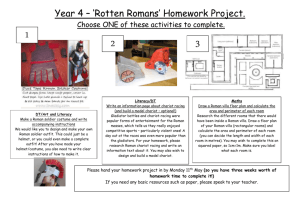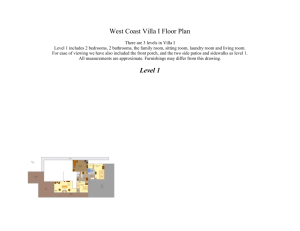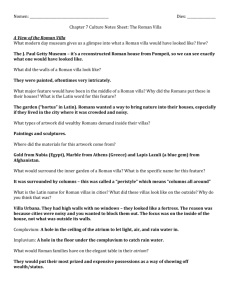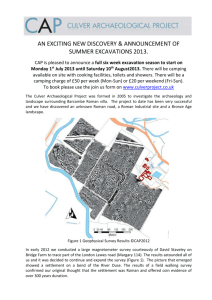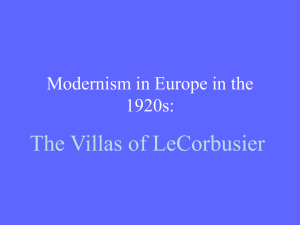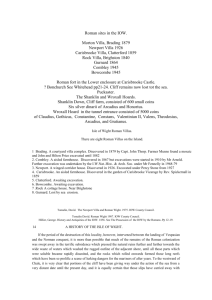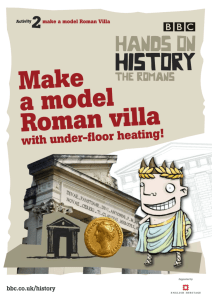The Late Roman Villa del Casale, 4km southwest of the Historic
advertisement
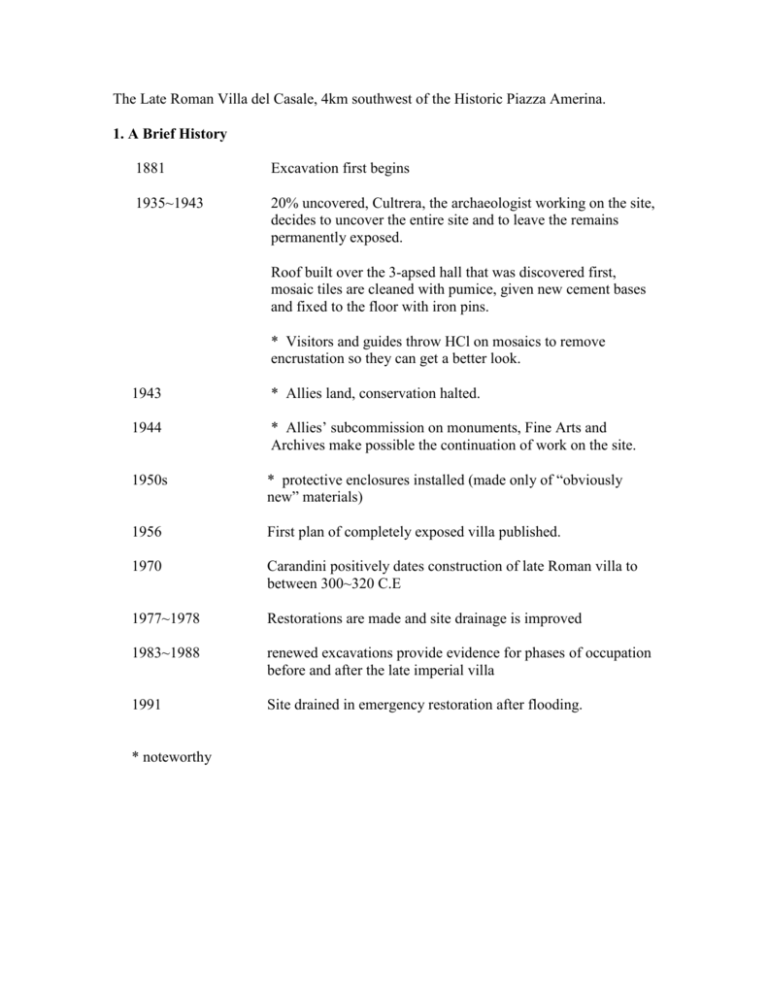
The Late Roman Villa del Casale, 4km southwest of the Historic Piazza Amerina. 1. A Brief History 1881 Excavation first begins 1935~1943 20% uncovered, Cultrera, the archaeologist working on the site, decides to uncover the entire site and to leave the remains permanently exposed. Roof built over the 3-apsed hall that was discovered first, mosaic tiles are cleaned with pumice, given new cement bases and fixed to the floor with iron pins. * Visitors and guides throw HCl on mosaics to remove encrustation so they can get a better look. 1943 * Allies land, conservation halted. 1944 * Allies’ subcommission on monuments, Fine Arts and Archives make possible the continuation of work on the site. 1950s * protective enclosures installed (made only of “obviously new” materials) 1956 First plan of completely exposed villa published. 1970 Carandini positively dates construction of late Roman villa to between 300~320 C.E 1977~1978 Restorations are made and site drainage is improved 1983~1988 renewed excavations provide evidence for phases of occupation before and after the late imperial villa 1991 Site drained in emergency restoration after flooding. * noteworthy 2. According to Nicholas Stanley-Price, the “wider significance of the villa” can be broken down into the historical, aesthetic, scientific, and social or symbolic values currently ascribed to it. He argues that educational and economic values are derived from the above and therefore are secondary values. HISTORICAL VALUE: Contribution to the understanding of late Roman society in Sicily and the Roman Empire i.e the unexpected size and wealth of the villa required a reinterpretation of the history of the province and its place in the Roman Empire at the time. AESTHETIC VALUE: Environmental (biodiversity of the area) Mosaic floors Architecture SCIENTIFIC VALUE: Studies of methods of flood control Studies of interior microclimate Also includes SCHOLARLY VALUE: Questions concerning the original ownership of the villa, its historical development, and so forth. Evolution of preservation and restoration techniques since 1940’s SOCIAL AND SYMBOLIC VALUES: Beauty of mosaics = pride to the local inhabitants, Sicilians Depictions of Roman life and leisure As a social and symbolic value because, as Stanley-Price puts it, the visitors’ “empathy with the past is the first step toward an enhanced appreciation of the cultural heritage. 3. Issues raised by Interventions: 1) Distortion of our understanding of an ancient site by the dominant research interests of previous investigators It was only in the 1980’s that people really began to care about the phases of occupation before and after the late imperial villa, For example the Villa Rustica from the 1st and 2nd centuries C.E that preceded the Villa del Casale, which provided the foundation for the bathhouses of the late Roman villa. 1.5) Although remains indicating an intermediate phase between the 2nd ~4th centuries were discovered, as well as Byzantine, Arab, and Norman period ceramics and architecture, the known history there is piecemeal, since much of the subsidiary contextual info was lost in leveling the archaeological deposit 5m in their search for mosaics. Need to explain all of this to the public 2) Protection of mosaics in situ through roofing Criticized for adverse aesthetic effect The need to protect the mosaics but also provide optimal visibility If a site has the potential to reveal additional areas requiring protection, should “first roofs” be deliberately designed to be low in cost and easily dismantled? 3) Translucent enclosures for optimal visibility But greenhouse effect, potentially damaging b/c exacerbates temperature and humidity fluctuations (to the point where visitors in the summer have been known to faint) Climate control system too costly?* 4) Lack of visitor itineraries Visitors walk on consolidated walls of the villa, so as to be able to see mosaics without stepping on them. Gives misleading impression of the sense of space, and of the movement between rooms No information available without tour guide. One route begins the tour behind the furnaces of the bath complex and a latrine! * No real suggestions from Stanley-Price…sort of helplessness Questions, Comments How important is it to provide a sense of the function of a thing or space? Is it better to be using a building for its original purpose or function? Eg: earlier discussion on Roman theatres prepared for performances with big audiences (i.e: walking on walls gives skewed sense of space and creates completely different patterns of movement within it (if that’s important, then what of ceremonial ceramics kept behind glass in museums ____________ POWER OF ASCRIBED VALUES Interesting how all other archaeological info was thrown aside to make way for the mosaics for their beauty, and how currently ascribed values are still incredibly heavy on “beauty of the mosaics”, ignoring most other history behind the place. But on the flip side…Roman history holds such a place in classical Western canon, “aesthetic value” of mosaic unlikely to give way to other values over the years (due to changed nature of international relations: economic development, industrialization, modernization, capitalism, globalization). So why not privilege it??



